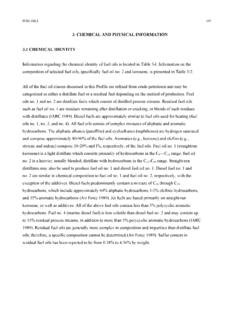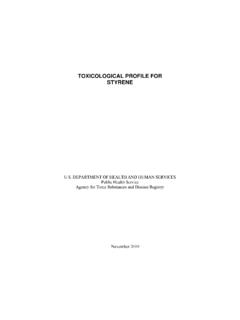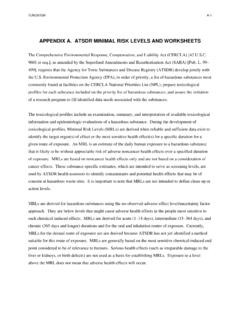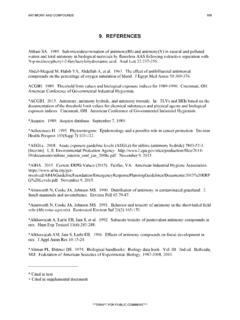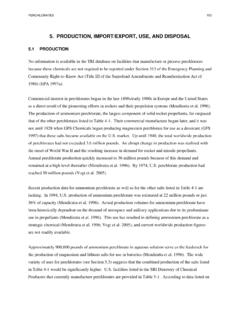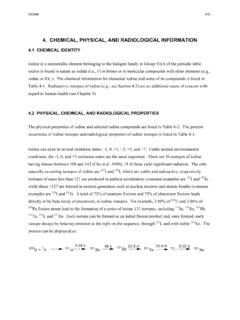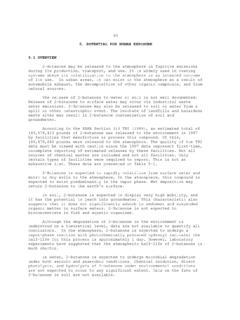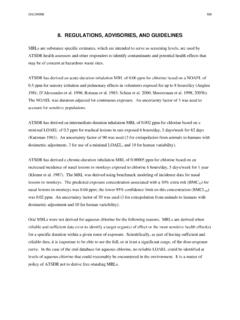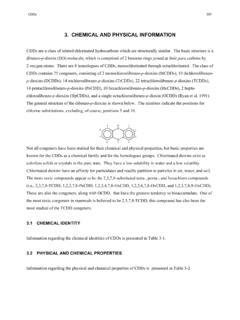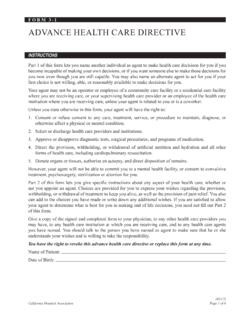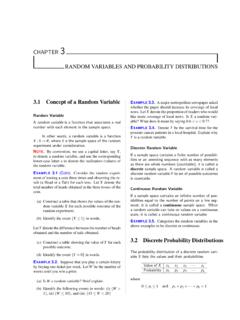Transcription of 3. CHEMICAL AND PHYSICAL INFORMATION
1 GASOLINE 1073. CHEMICAL AND PHYSICAL CHEMICAL IDENTITYG asoline is a refined product of petroleum consisting of a mixture of hydrocarbons, additives, andblending agents. The composition of gasolines varies widely, depending on the crude oils used, therefinery processes available, the overall balance of product demand, and the product typical composition of gasoline hydrocarbons (% volume) is as follows: 4-8% alkanes; 2-5%alkenes; 25-40% isoalkanes; 3-7% cycloalkanes; l-4% cycloalkenes; and 20-50% total aromatics( benzene) (IARC 1989). Additives and blending agents are added to the hydrocarbonmixture to improve the performance and stability of gasoline (IARC 1989; Lane 1980). Thesecompounds include anti-knock agents, anti-oxidants, metal deactivators, lead scavengers, anti-rustagents, anti-icing agents, upper-cylinder lubricants, detergents, and dyes (IARC 1989; Lane 1980). Atthe end of the production process, finished gasoline typically contains more than 150 separatecompounds although as many as 1,000 compounds have been identified in some blends (Domask1984; Mehlman 1990).
2 INFORMATION regarding the CHEMICAL identity of gasoline is located inTable PHYSICAL AND CHEMICAL PROPERTIESI nformation regarding the PHYSICAL and CHEMICAL properties for the gasoline mixture is located inTable 3-2. In cases where data are not available for gasoline, ranges are given to indicate the differentvalues for the individual components.
